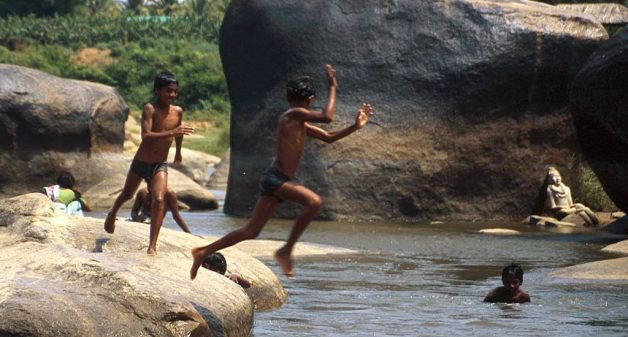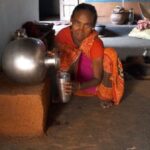Kites and grasshoppers: Representing the lack of equal opportunity in rural India
The kite is a strong bird that flies high in the sky. The kite flies high and has its sight over a wonderful panorama. Its eyesight is remarkably accurate. It spots its prey from a few hundred feet high in the sky and makes a speedy dive to grab the prey before the poor creature has time to hide or save itself. And this it can do perhaps in a radius of a kilometer or so.
The grasshopper, on the other hand, lives in grass and feeds on insects and small prey. It hops rather than fly. It is stationed in the grass and its vision extends but a few feet. So it keeps hopping from a leaf to another to inspect if prey is available near it.
Both the creatures coexist in nature; perhaps grasshoppers are far more numerous, as they are far shorter lived compared with a kite.
During my education, I interacted with fellow students from large cities and metros. Their worldview was so different from mine. They knew things of which I had not even heard. They spoke a language and used an idiom that was foreign to me. The music they listened to, the sports they talked about, their heroes and heroines — everything was new and foreign to me.
It took me months to feel comfortable with them even though throughout that period they derided and patronized me. It was all because of my relatively constricted worldview and exposure. I was born in 1956 and spent my early childhood in the district town Amrawati before my family moved to Nagpur in 1967. My playmate and landlord’s son grew up in Amrawati. I had a cousin of my age who studied for all his education in a tehsil town Ramtek.
Grasshopper in the backyard
And, undoubtedly thousands, if not lakhs, of children born around 1956 have grown up in villages and lead a life that is so very different from mine. That is, if they still live and have not contributed to keeping our National Life Expectancy at only 67. This sort of traces the spectrum akin to the faunal counterpart starting from the Golden Eagle, through the kite and down to the grasshopper in my backyard.
I can quite understand that those children born and brought up in villages in relation to my cousin, he in relation to my landlord’s son and he in turn in relation to me entertain pretty similar feelings as I do vis-a-vis my contemporaries in Indian Institute of Management at Ahmedabad.
But, far more importantly, the extent to which our aspirations evolved and the extent to which we could attain them also is defined by these circumstances of birth and formative years.
The environs in which we grew up threw up opportunities and shaped our dreams and our parents’ dreams about us. This seems perfectly natural, does it not? But how indelible and irreversible is the effect they make on our lives. What is it then meant by equal opportunity, and how can we ever move towards it?
Limited definition of equal opportunity
Equal opportunity is interpreted narrowly. It essentially means that no one can wantonly, or merely on the basis of caste, creed or language, deny a candidate his right to try and win a seat or an admission or a public office. But this is a very limited definition of opportunity.
In reality, opportunity is defined by an individual’s worldview, his access, social networks, parental influence and, of course, many of these things in turn are defined by his economic position.
Many a children born to feudal lords controlling vast tracts of land have perhaps the chance to overcome the constraint of the locale by using the parental money to access things available to city boys. The children of the feudal lord’s retinue staff cannot do so and are stuck forever in the rural rut.
It is perhaps useful to deconstruct the simple and simplistic word opportunity in its various components. Surely access to quality education is a prime component of opportunity. Then there is access to good health care if we are to grow up as healthy adults. We also need access to infrastructure for games and sports. We will need access to good print media if we are to continuously improve our language skills. We will need access to electronic media if our infotainment sources are to be global, and an ethos of cultural activities if we are to develop ourselves in arts or cultural forms.
The need for an enlightened network in rural India
We need an informed and enlightened network of persons with whom we interact in the course of our daily lives or at least whom we can approach for counseling and advice.
We sure need financial strength and social standing for some or most of these things. And above all we need the possibility of devoting time to our own development in our childhood and in our formative years.
When I travel across rural areas and see half naked children scampering behind the vehicle in which I am taken to their village, I wonder to what extent if any will they have access to any of the above. When my own son was a young boy I used to return from such travel to find him composing fictional essays in a foreign language and typing them on my desktop on subjects that he had either read or seen on the TV.
And then, I would in my own mind compare what those children in those villages would do when they were as old as my dear boy.
But as it would turn out, the life trajectory of my son and an average boy of his age in a village in Yeotmal in Maharashtra are and will remain as different from each other as that of the kite and the grasshopper. Rural India sorely falls behind on guaranteeing equal opportunity to these children.
Given that India is largely rural, do we want our country to be that of grasshoppers?
Sanjiv Phansalkar is associated closely with Transform Rural India Foundation. He was earlier a faculty member at the Institute of Rural Management Anand (IRMA). Phansalkar is a fellow of the Indian Institute of Management (IIM) Ahmedabad. Views are personal.








